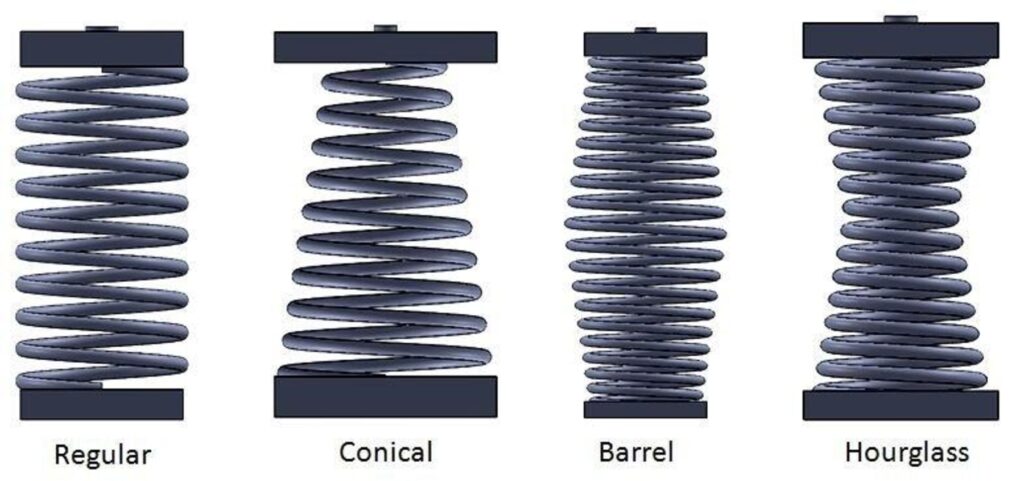The Mechanics Behind Compression Springs
Introduction
Have you ever wondered how those essential, coiled metal components found in countless everyday objects work? From pogo sticks to retractable pens, compression springs play a critical role in making things bounce back, retract, or provide resistance. In this blog, we’ll delve into the fascinating world of compression springs and explore how they function.

What Are Compression Springs?
Compression springs are coil-shaped mechanical devices engineered to accumulate potential energy when subjected to compressive forces. They are coil-shaped and made from various materials, with steel being a popular choice due to its durability. These springs are known for their ability to absorb external forces and return to their original shape when the load is removed.
How Do Compression Springs Work?
At the heart of a compression spring’s operation is Hooke’s Law, a fundamental principle in mechanics. According to this law, the force required to compress a spring is directly proportional to the amount the spring is compressed. In simpler terms, the more you compress a spring, the more it resists that compression.
When a compression spring is compressed, it stores potential energy within its coils. This energy is then released when the force causing the compression is removed. This is the basic mechanism behind a compression spring’s ability to bounce back or push against a force.
Applications of Compression Springs
Compression springs are versatile components used in a wide range of applications, including:
Automotive Suspension: Compression springs can be found in a vehicle’s suspension system, where they absorb shock and provide a smoother ride.
Industrial Machinery: They are used in heavy machinery to provide stability and support.
Stationery: Retractable pens and other stationary items often use compression springs to control the retracting mechanism.
Rifles: In firearms, compression springs play a critical role in loading and ejecting cartridges.
Electrical Switchboards: They help with the safe and efficient operation of electrical equipment.
Household Items: Everything from door handles to couches may contain compression springs to provide comfort and functionality.
Design Considerations
The design of compression springs involves several critical factors, including the material used, the number of coils, the wire diameter, and the pitch (spacing between successive coils). Engineers carefully consider these parameters to ensure the spring’s performance matches the intended application.

Conclusion
In summary, compression springs are essential mechanical components that operate on the principle of storing and releasing energy. Their versatility and effectiveness make them indispensable in various industries, from automotive to household products. The next time you use a retractable pen or feel the comfort of a cushioned chair, take a moment to appreciate the role of these simple yet ingenious devices in making your life easier and more comfortable.



